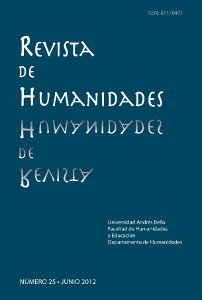La visibilidad del homosexual, sus cartografías urbanas y la tolerancia del consumo
Palabras clave:
Consumismo, visibilidad, marginalización, estudios queer, estudios urbanosResumen
Este trabajo pretende analizar el tratamiento del personaje literario homosexual y su vínculo con el éxito y el fracaso del sistema económico imperante en las obras El vampiro de la Colonia Roma (1979) de Luis Zapata, Apocalipstick (2009) de Carlos Monsiváis y No quiero quedarme sola y vacía (2006) de Ángel Lozada, a través de la construcción de género y espacio urbano en algunos de los vecindarios más representativos de la Ciudad de México y Nueva York a finales de siglo XX y principios del XXI.
Descargas
Referencias
Blanco, José Joaquín. “Ojos quedanpánicosoñar.” Función De Medianoche. México: Ediciones Era, 1981. 254-61. Impreso.
Chauncey, George. Gay New York: Gender, Urban Culture, and the Making of the Gay Male World, 1890-1940. New York: Basic, 1994. Impreso.
Covarrubias, Alicia. “’El Vampiro de la Colonia Roma’, de Luis Zapata: La nueva picaresca y el reportaje ficticio.” Revista De Crítica Literaria Latinoamericana 20.39 (1994): 183-97. Impreso.
Distelberg, Brian J. “Mainstream Fiction, Gay Reviewers, and Gay Male Cultural Politics in the 1970s.” GLQ: A Journal of Lesbian and Gay Studies 16.3 (2010): 389-427. Impreso.
Dorantes, Adriana. “El Vampiro de la Colonia Roma... 30 años después: Nueva Edición de novela icónica de los ‘70.” Cultura UNAM-Diario Digital. Universidad NacionalAutónoma De México. Web. 29 Nov. 2010. <http://www.artshistory.mx/noticiario/index.phpid_nota=01062009194306>.
De Ceccatty, René, Jean Daner y Jean Le Bitoux. Entrevista. Foucault live (Interviews, 1966-1984), Sylvére Lotringer. Ed. Semiotext(e), 1989, 206-15.
Foucault, Michel, and Paul Rabinow. Ethics: Subjectivity and Truth. New York: New, 1997. Impreso.
García - Escalona, Emilia. “Del ‘armario’ al barrio: aproximación a un nuevo espacio urbano.” Anales de Geografía de la Universidad Complutense. Universidad Complutense de Madrid, 2000. Web. 25 Mar. 2011. <http://revistas.ucm.es/ghi/02119803/articulos/AGUC0000110437A.PDF>.
Garcia Canclini, Néstor. “What Is a City?” City/art: The Urban Scene in Latin America. Durham N.C.: Duke UP, 2009. 37-60. Impreso.
Greenberg, David F. The Construction of Homosexuality. Chicago: University of Chicago, 1988. Impreso.
Žižek, Slavoj. Violence: Six Sideways Reflections. New York: Picador, 2008. Impreso.
La Fountain-Stokes, Lawrence M. Queer Ricans: Cultures and Sexualities in the Diaspora. Minneapolis: University of Minnesota, 2009. Impreso.
Lozada, Ángel. No quiero quedarme sola y vacía. San Juan: Isla Negra, 2006. Impreso.
Matthaei, J. “The Sexual Division of Labor, Sexuality, and Lesbian/Gay Liberation: Toward a Marxist-Feminist Analysis of Sexuality in U.S. Capitalism.” Review of Radical Political Economics 27.2 (1995): 1+. Impreso.
Medina, Alberto. “De nómadas y ambulantes: El Vampiro de la Colonia Roma o la utopía suplantada”. Revista Canadiense de Estudios Hispánicos 32.3 (2008): 507-21. Impreso.
“Mexico - Britannica Online Encyclopedia.” Encyclopedia - Britannica Online Encyclopedia. Web. 29 Nov. 2010. <http://www.britannica.com/EBchecked/topic/379167/Mexico>.
Monsiváis, Carlos. Apocalipstick. Mexico, D.F.: Debate, 2009. Impreso.
Monsiváis, Carlos. “Enlightened Neighborhood: Mexico City as a Cultural Center.” City/art: The Urban Scene in Latin America. Durham [N.C.: Duke UP, 2009. 335-50. Impreso.
Monsiváis, Carlos. “Protestante Digital :: DOMINICAL: Protestantismo, Diversidad Y Tolerancia Según Monsiváis.” Protestante Digital: Noticias Cristianas Evangélicas O Protestantes; De Sociedad; Y De Otras Iglesias O Religiones. Web. 22 Nov. 2010. <http://www.protestantedigital.com/new/nowleernoticiaDom.php?r=353&n=17284>.
“New York City”. Encyclopædia Britannica. Encyclopædia Britannica Online. Encyclopædia Britannica Inc., 2012. Web. 25 Jan. 2012. <http://www.britannica.com/EBchecked/topic/412352/New-York-City>.
Perez, Marta. “Espacios incómodos e hirientes: El exilio en la mujer del mar.” Ventana Abierta 6.22 (2007): 29+. Impreso.
Pérez, Francisco. “El infierno social y personal del marginado: el homosexual en la Ciudad de México.” CLA Journal 41.2 (1997): 204-21. Impreso.
Ramos Otero, Manuel. “Hollywood Memorabilia.” John Hopkins University Press 15.4 (1992): 973-8. Impreso.
Sancholuz, Carolina. “Puerto Rico en Nueva York; escritura, desplazamiento y sujetosmigrantes en cuentos de Manuel Ramos Otero.” Revista de Estudios Hispánicos 33.1 (2006-01-01): 117-38. Impreso.
Schuessler, Michael Karl, and Miguel Capistrán. México se escribe con J. México, D.F.: Editorial Planeta Mexicana, 2010. Impreso.
Smith, Chris. “Mayor Michael Bloomberg’s Gay Marriage Solution.” New York Magazine. 25 May 2005. Web. 24 Jan. 2012. <http://nymag.com/nymetro/news/politics/columns/citypolitic/11075/>.
Zapata, Luis. Las Aventuras, desventuras y sueños de Adonis Garcia: El Vampiro de la Colonia Roma. México, D.F.: Editorial Grijalbo, 1987. Impreso.
Descargas
Publicado
Número
Sección
Licencia
Derechos de autor 2022 Revista de humanidades (Santiago. En línea)

Esta obra está bajo una licencia internacional Creative Commons Atribución-NoComercial-SinDerivadas 4.0.
You are free to:
- Share — copy and redistribute the material in any medium or format for any purpose, even commercially.
- Adapt — remix, transform, and build upon the material for any purpose, even commercially.
- The licensor cannot revoke these freedoms as long as you follow the license terms.
Under the following terms:
- Attribution — You must give appropriate credit , provide a link to the license, and indicate if changes were made . You may do so in any reasonable manner, but not in any way that suggests the licensor endorses you or your use.
- No additional restrictions — You may not apply legal terms or technological measures that legally restrict others from doing anything the license permits.
Notices:
You do not have to comply with the license for elements of the material in the public domain or where your use is permitted by an applicable exception or limitation .
No warranties are given. The license may not give you all of the permissions necessary for your intended use. For example, other rights such as publicity, privacy, or moral rights may limit how you use the material.













